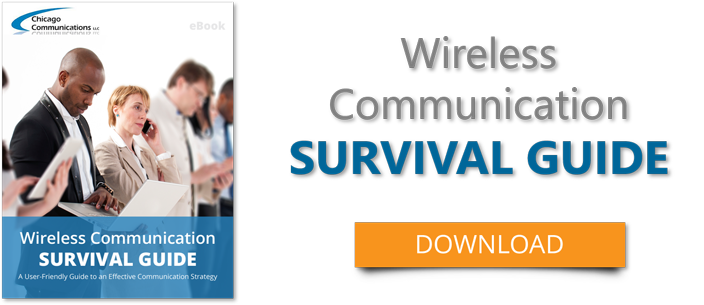 Wireless communication has come a long way. But many businesses still have questions about whether it is as secure as wired technology, and whether it’s a good investment over time. Here, we took a closer look at this technology, its security, and additional benefits when it comes to connecting people in multiple industries, including manufacturing, hospitality, healthcare, and transportation.
Wireless communication has come a long way. But many businesses still have questions about whether it is as secure as wired technology, and whether it’s a good investment over time. Here, we took a closer look at this technology, its security, and additional benefits when it comes to connecting people in multiple industries, including manufacturing, hospitality, healthcare, and transportation.
What is wireless communication?
As its name suggests, wireless communication is a type of data communication that is transmitted between two or more devices using a wireless signal. Communication is sent through electromagnetic signals from a sender to a receiving device. Wireless communication encompasses all forms of wireless technologies you regularly hear about: satellite communication, mobile communication, wireless network communication, infrared communication, and Bluetooth communication.
Wired technology and security
Wired networks are typically believed to be more secure than wireless networks because wired networks can only be accessed with a physical cable connection. To intrude, hackers need to physically connect to an unauthorized device. The network is completely contained, and communication can be secured without the need for encryption or other configurations. In addition, wired networks are associated with greater reliability and speed. Wired technology can connect across physical barriers or distances, and routers never having to be reset. And, modern wired Ethernet connections can reach speeds up to 5 gigabits per second.
Where does wireless communication stand?
Still, for many businesses, the benefits of wired infrastructure often do not offset the limitations. Implementing wired technology involves permits, fees and zoning requirements. Underground trenching may be needed, and the cost of copper lines is always increasing. Extensive setup time and resources are required, bringing in long-term logistics surrounding staff, equipment, and office furnishings. Space is needed, along with added measures to keep lines safe and working properly. Once wired technology is set up, growth can be limited, as more time and resources are needed to add connections, access and lines.
Wireless communication offers an option for communication and growth that is not hindered by the need for physical connection and, in most cases, can be secured. Wireless networks use radio transmissions to carry data, so steps must be taken to contain those radio waves. Sources say this requires using strong encryption to protect communications. Encryption uses ciphers to scramble data in such a way that only the legitimate end user can decipher it. Both Wired Equivalent Privacy (WEP) and Wi-Fi Protected Access (WPA) can be supported by wireless networks and can help reduce significant vulnerabilities.
This does require an additional focus on security when setting up wireless networks. Businesses must stay one step ahead of potential hackers and make sure they have the necessary encryption processes in place. Despite the additional security efforts needed, wireless communication offers additional benefits that many businesses find too valuable to resist. Wireless communication:
- Costs less in both infrastructure and maintenance
- Is more flexible—New configurations can be easily added, and you’re not limited by cables and ports.
- Offers greater convenience—Users can connect anywhere they can access a signal.
- Provides an ability to scale—With wireless technologies you can create point-to-point or point-to-point connectivity across your operations. There are also solutions for ensuring communication through dead spots, across broad outdoor spaces, or in large, older buildings made of reinforced steel or concrete. Simply, wireless networks can improve coverage and can go where physical wires and cables cannot not.
With the proper expertise and setup, a wireless network can provide secure communications, cost-savings and other benefits across your operations. For more information about exactly what equipment you need, learn more in our Wireless Communication Survival Guide.



